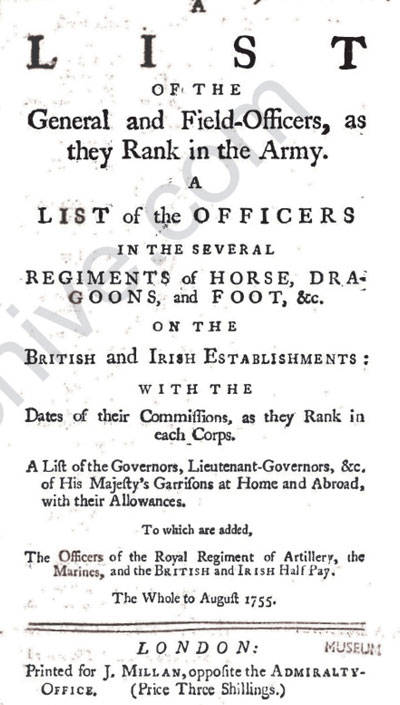The RUSI Library of Military History has retained an excellent collection of records detailing the ranks and career progression of officers between the eighteenth and early twentieth centuries. Now those records have been digitised for greater accessibility. By Tony Pilmer, Acting Librarian, RUSI Library of Military History

For those researchers who need to track down the career of an eighteenth, nineteenth or twentieth century army officer, our excellent collection of Army Lists has been just the place to start. Since the mid-eighteenth century the British Army has regularly published a list of each officer by rank and by regiment. This means you can track an officer's path from rank to rank and from regiment to regiment. The list also includes details of when each officer achieved their rank so you can also establish who had seniority over whom. Unsurprisingly, the Army List is a key reference book for military historians and one of the RUSI Library of Military History's most used collections. Electronic access to the list was made possible by the Army Heritage Branch.
After borrowing RUSI's collection for one of their projects, the Branch offered to fill any gaps in our collection with material from other sources. The project was finished earlier this year and we now have electronic access to lists dating from 1754 to 2012. As OCR software has been used during the digitisation process we can search for names and regiments that appear in each individual volume. Though the primary reason for the lists was to act as a directory for the Army, the early list also printed some other great nuggets of information. They comprise of printed warrants and circulars. The February 1832 lists printed the 'warrant regulating the prevision of clothing etc.'.
Here, we are told, the colonels of Heavy Cavalry Corps had to supply their officers with a helmet every 6th year, while a colonel of a Corp of Light Dragoons or Lancers had to supply every four years one cap (with line, plume and cover) and one dress jacket, one undress jacket, one pair of overalls unlined and one flannel waistcoat biennially. The following month's list went on to state what each officer had to supply themselves; for a Heavy or Light Cavalryman this including drawers, horsepicker (the Swiss Army knife attachment for taking stones from horses hooves) , turnscrew (screwdriver), gunworm and picker.
These warrants and circulars were printed separately in the late Nineteenth and early Twentieth century and the RUSI Library of Military has an excellent collection of these instructions too. Other material in the Army Lists include details of those officers awarded British and Foreign orders, adverts for products such as furniture, maps and carriages and list of those who had died and had still have some of their salary unclaimed.
Since 2006 the Army List has only been available on CD-ROM. Now called the E-Army List, it still contains a section on each regiment and a names index, plus a main search box. We have access to these lists too. Though the British Army first started to publish the List during the mid-Eighteenth century, there are publications which list British Army officers dating back to the 17th century.
The researcher and honorary RUSI member Charles Dalton spent nearly twenty years trawling through the late Seventeenth and early Eighteenth century commission books and constricted lists recording officers by regiment. These six volumes were published between 1892 and 1904 and Dalton kindly donated a copy of each volume to the RUSI Library of Military History. The e-army lists can be used by visitors to the RUSI Library of Military History. Members can also ask the librarian to do simple searches on their behalf.
